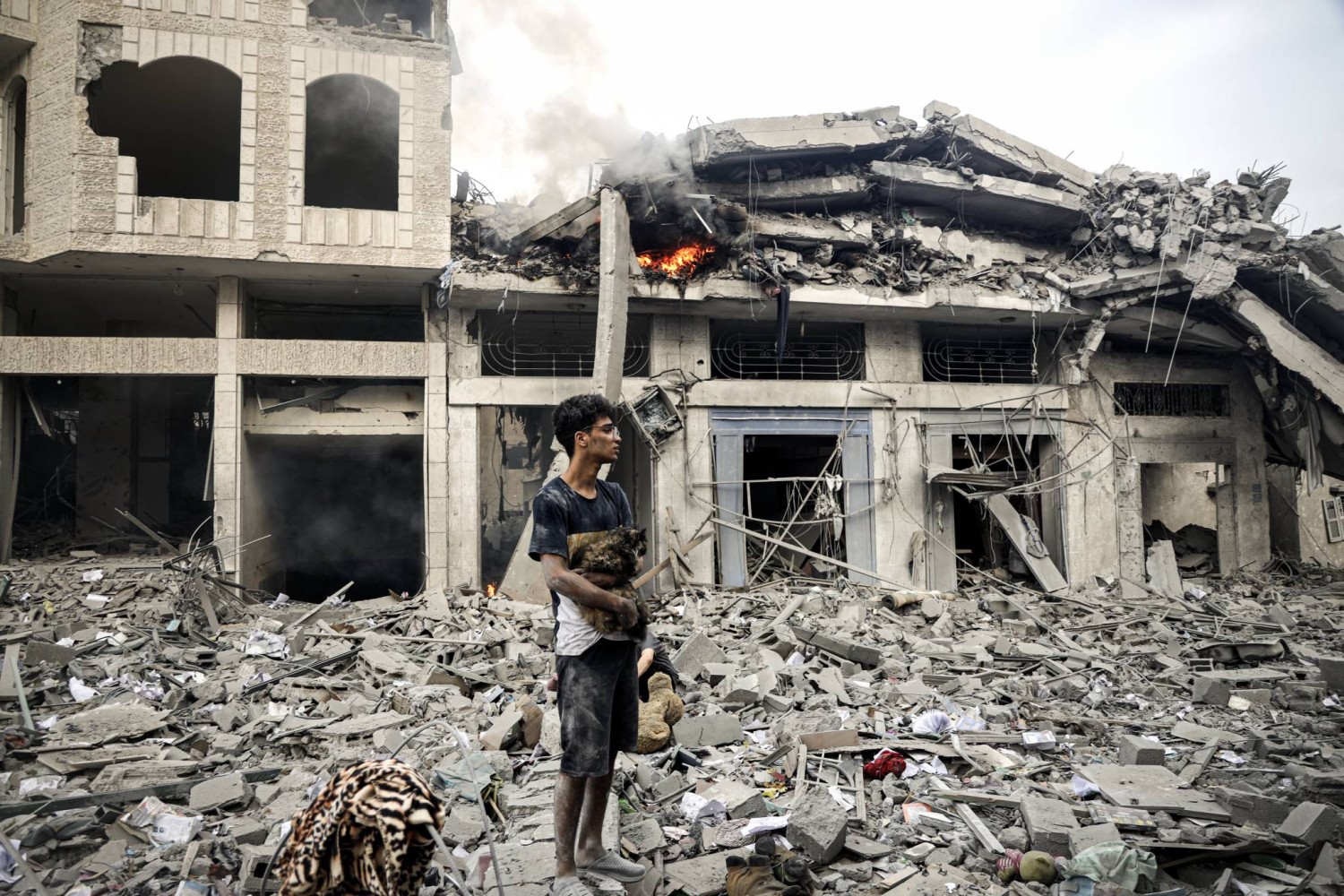GAZA/ NEW YORK, 18 January 2024 – “I have just finished a three-day visit to the Gaza Strip, where I have been able to coordinate with local and international organizations about the emergency response and take stock of humanitarian operations since the last time I was in the Gaza Strip two months ago. But more than that, I was able to meet with children and their families suffering some of the most horrific conditions I have ever seen.
“Since my last visit, the situation has gone from catastrophic to near collapse. UNICEF has described the Gaza Strip as the most dangerous place in the world to be a child. We have said this is a war on children. But these truths do not seem to be getting through. Of the nearly 25,000 people reported to have been killed in the Gaza Strip since the escalation in hostilities, up to 70 per cent are reported to be women and children. The killing of children must cease immediately.
“On Tuesday, I met an 11-year-old girl called Sama at Al-Nasser Hospital in Khan Younis. She was skipping with friends when they were hit by shrapnel from a bombardment. The shrapnel sliced through Sama’s abdomen, forcing her into surgery to remove her spleen. She is recovering in hospital, isolated from everyone around her because she is now immunocompromised in a war zone full of disease and infection.
“10 minutes later I met 13-year-old Ibrahim. He was in a designated shelter with his family, in an area they were told was safe, when everything collapsed around them. Ibrahim’s hand was badly damaged and quickly became infected. Without medicine, gangrene took hold and he ultimately lost his arm during an amputation without anaesthetic. Ibrahim’s mother, Amani, who accompanied him to the south of the strip for life-saving treatment in Al-Nasser asked for help reaching her remaining six children and husband who had remained north of Gaza City. She has not heard from them in two months.
“A matter of hours after we left, many families fled Al-Nasser hospital as fighting closed in on the area.
“Over 1.9 million people, or nearly 85 per cent of Gaza’s population, is now displaced including many who have been displaced multiple times. Over a million of them are in Rafah, resulting in a patchwork of makeshift shelters and sites that have made the small town nearly unrecognisable.
“The sheer mass of civilians on the border is hard to fathom and the conditions they live in are inhumane. Water is scarce and poor sanitation is inescapable. The cold and rain this week created rivers of waste. The little food that is available doesn’t meet children’s unique nutritional needs. As a result, thousands of children are malnourished and sick.
“Two months ago, cases of diarrhoea were up 40 per cent from before the escalation in hostilities. By mid-December, 71,000 cases were recorded among children under five, a more than 4000 per cent increase since the war began.
“This is nothing short of a staggering decline in conditions for the children of Gaza. If this decline persists, we could see deaths due to indiscriminate conflict compounded by deaths due to disease and hunger. We need a major breakthrough.
“This starts with an end to the intense bombardment, which is not only killing thousands, but is also impeding the delivery of aid to survivors. We have to get more trucks in, do so via more crossings, and with far more efficient inspection processes. Before the conflict more than 500 trucks entered the Gaza Strip every day. When I was there in November, about 60 aid trucks a day entered. Now, it is about 130 trucks a day alongside an average of 30 commercial trucks a day. This is with the opening of a second crossing point but it still remains wholly inadequate. We are trying to drip assistance through a straw to meet an ocean of need.
“There must be fewer restrictions on the kind of aid we can bring in, such as generators for water pumps and pipes to repair water facilities, which are critical to restore the water and sanitation services essential for people’s survival.
“Once aid gets into the Gaza Strip, our ability to distribute it becomes a matter of life and death. It is imperative that access restrictions are lifted, reliable ground communications ensured, and movement of humanitarian supplies facilitated to ensure those who have been without aid for days receive desperately needed assistance. And, we have to get commercial traffic flowing in Gaza, so that markets can reopen and families can be less dependent on relief.
“Finally, we need access to the north. The estimated 250,000 to 300,000 people living in north Gaza have no access to clean water and barely any food. In the first two weeks of January, only 7 of 29 planned aid deliveries have successfully reached their destinations in northern Gaza. Not a single UNICEF convoy has accessed the north of the Gaza Strip in 2024.
“Where we have access, we can make a difference. I visited one of the two desalination plants in Khan Younis that UNICEF is supporting and that is providing some water to about 250,000 people. I saw children wearing the winter clothes we brought in and families using soap and sanitary products from hygiene kits that have gotten through.
“We cannot wait any longer for a humanitarian ceasefire to end the daily killing and injuring of children and their families, enable the urgent delivery of desperately needed aid and the safe and unconditional release of the two remaining Israeli children still held hostage in Gaza. This cannot go on.”







